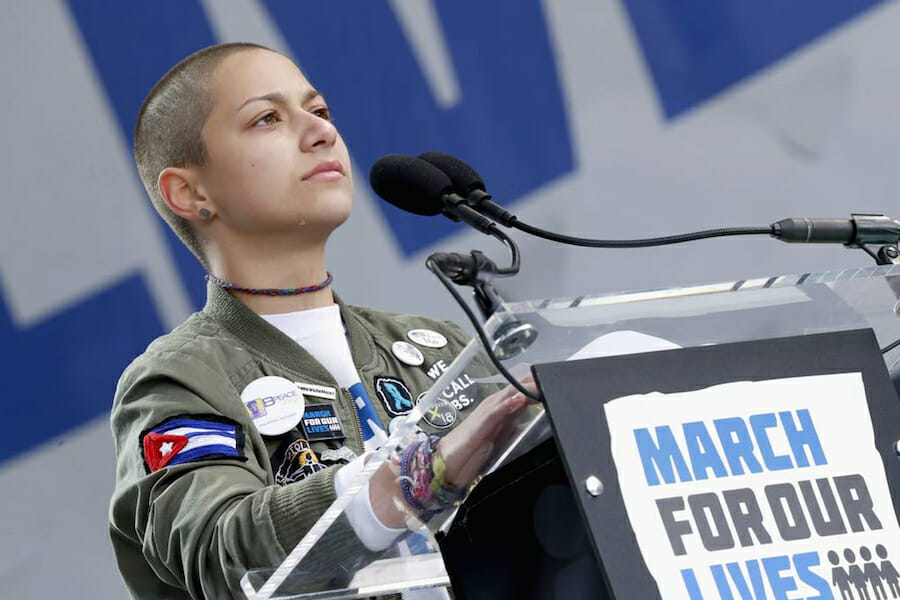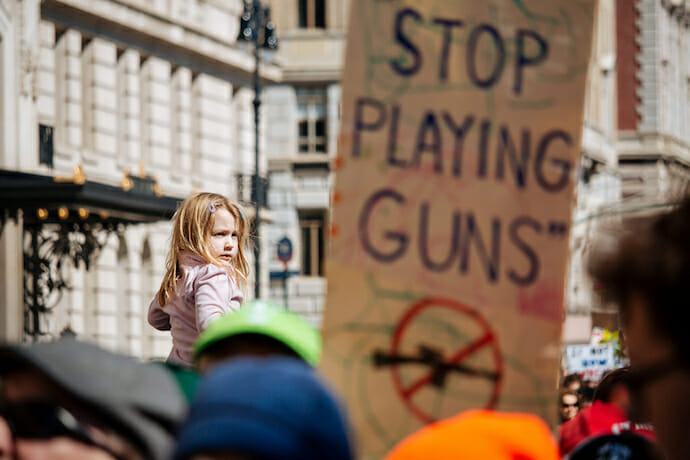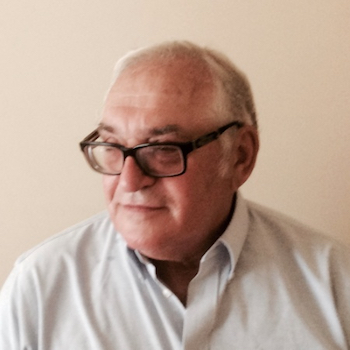
Reflections on Mass Shootings and Gun Control
Every time a mass killing occurs in the United States the country literally explodes. Heated debates and acrimonious confrontations ensue. They all revolve around the same question: What can we do to stop these killings?
There are two principal views on how to deal with this problem. The proponents of one view focus on the availability of guns in the United States. They argue that easy access to guns is the single most important factor that contributes to mass shootings in this country. The solution is simple: the government should pass legislation that would limit access to guns. Some go so far as to demand making gun ownership totally illegal.
The opponents of gun control focus on perpetrators of gun violence. The well-known adage they never get tired of repeating is “guns don’t kill, people do.” Their approach is primarily preventative. In their view, both mental health professionals and law enforcement agencies should do more to prevent such crimes.
There is hardly an issue that divides America more than gun control. The two sides in this debate vehemently disagree with each other. Sparks fly when they meet. Each side has its vulnerabilities. Critics of gun control argue that there is no evidence that supports a causal relationship between the availability of guns and violent crimes. They also point out that gun control violates the Second Amendment of the U.S. Constitution. Many law-abiding Americans view this amendment as one that guarantees their fundamental rights and freedoms under the Constitution. Finally, critics argue that the enforcement of gun control legislation is likely to cause resistance and provoke more violence.
The solution that the opponents of gun control propose also raises objections. Mass killers are in many ways very different and notoriously hard to profile. Identifying a potential perpetrator is forbiddingly difficult and may involve serious infringements on individual rights and freedoms with little actual benefit. The logistical difficulties associated with a thorough screening of potential perpetrators are daunting and in the end may prove to have little value. As many past cases show, only after the crime is committed, the intricate connections among the various factors relevant to criminal predisposition begin to make sense. These connections are hard to see before the crime is committed.
In order to solve a problem, we need to know its source. As has been shown, both sides in the gun control debate have their vulnerabilities. Their main problem is that they both base their arguments on assumptions that they have not critically examined and have not justified. Indeed, can we universalize the proposition that the availability of guns is what causes mass shootings? Switzerland has no gun control, yet the level of violent crimes involving guns in Switzerland is very low and mass killings are practically unheard. Conversely, such countries as France or Great Britain, where gun control laws are very strict, have been the scene of mass shootings. Those who want to kill always seem to be able to find a way to get guns and, as we have sadly learned, guns are not the only means to kill many people.
The foundational assumption of the opponents of gun control is also impossible to universalize. Indeed, how many individuals who have a history of mental illness or who suffered from child abuse, or who were bullied in school, may actually commit a violent crime, particularly a mass shooting?
The fact that both sides make assumptions that are subjective and, therefore, are ultimately irrational is not a good sign. Solutions based on such assumptions can only be subjective and irrational; and there is no logical reason why one subjective and irrational solution should be preferable to another. The discrepancy between claims of objectivity and the obvious bias is a sure prescription for conflict that obviously cannot be solved in a rational manner. The conclusion that follows from the above is that only an assumption that can withstand critical examination and empirical verification can serve as the basis for a resolution of the conflict between the supporters of gun control and their opponents—a solution that would be rational and acceptable to all sides in the debate.
Although, as has been indicated earlier, perpetrators of mass shootings are in many ways very different, there is one fact that is relevant to all of them. This fact is so obvious that it may even appear trivial at first glance. Only on close examination it reveals its explanatory potential. All perpetrators of mass shootings place little value on life, both their own and that of others. They obviously see nothing that makes life worthwhile. There seems to be no joy and no happiness in their life; and that is why they are indifferent to death, either their own or that of others.

Happiness is a big word. We all want to be happy. But what is it that makes us happy? What is the source of our happiness? What is it that can make people unhappy to such a degree that they are willing to destroy life?
Many scholars who study happiness (believe it or not, there is such academic field as happiness studies) agree that what makes one feel happy is gratification–the satisfaction of some need. We humans can have all sorts of needs and desires and, consequently, there is not one thing that satisfies us all. Yet there is one need among all that is uniquely human, that is, it relates to our unique human nature. This unique need can only be one that is common to all of us–something that makes us human, that is, distinct from animals and all other forms of life.
This unique feature is our capacity for symbolic thought. No other animal, no other form of life is capable of performing symbolic operations so consistently and so systematically as we humans can. It is our signature trait. The ability of our brain to perform symbolic operations is a creation in its own right. It has emerged in the course of the evolution and has taken this evolution to a totally different hitherto unknown level—the level symbolic thought. The emergence of human intellect is a creative act of enormous import; it is a true miracle in the sense that it involves discontinuity, that is, the appearance of something that did not exist prior to its emergence and cannot be traced by linear logic to something that preceded it. Yet, as miraculous as the emergence of human intellect is, this emergence is so commonplace that hardly anyone is surprised when it happens. We take it for granted. We all perform this act of creation. We all develop the conscious intellect of our own, and we do it in the first year of our life.
Human intellect arises as a result of the process that makes creation possible. Since we all develop a conscious intellect, we obviously can perform this creative act and must be familiar with the process of creation. In other words, we possess the function that allows us to create. We also have a unique tool—our mind—that is capable of performing this function. In order to remain human, we must conserve this function.
In order to conserve a function, it must be used. The more a function is used, the better it is conserved. Therefore, we have to use the creative capacity of our mind in order to conserve it. The use of a function satisfies the need to conserve this function. Consequently, the use of our mental capacity to create satisfies our deeply felt need to conserve our conscious intellect and thus remain human.
We enjoy being creative because it satisfies our deeply felt need to be human and because it is a profoundly familiar act. Just like the child who smiles at the familiar sight of mother’s face, we also experience joy when we perform a familiar operation. Many creative individuals have noted that an act of creation gives them a sense of fulfillment and joy. A creative act is an act of self-affirmation that reveals to us our creative powers. We feel empowered and in control. We feel happy.
Conversely, when we do not use our creative potential or when our creative agency is suppressed, we do not conserve our essential function; we do not affirm our own self and, therefore, feel disempowered. Disempowerment and lack of control produce fear; and violence is a very common companion to fear.
Neither side in the gun control debate deals with the true cause of violence and mass shootings. They both address symptoms rather than the cause. They focus on factors that accompany mass violence, rather than cause it. The result is that the treatment they propose is ineffective and may even be worse that the disease itself. What gun control proponents propose may be useful in some limited number of instances but as a general rule it basically amounts to fighting fire with an even bigger fire. America has its own unique history and experience. There are traits in our culture that many Americans see as an essential part of their identity. They cherish this identity and love their heritage; and it will be extremely unwise to disregard this fact.
The reality is that there are between 250 and 310 million of guns in the United States. An overwhelming majority of gun owners are decent and law-abiding citizens. They include people from all walks of life and different age groups. They are workers, farmers, lawyers, doctors, teachers, businessmen and businesswomen, members of the armed forces and the police, white, black, and yellow, old and young. They view gun ownership as their heritage and their fundamental right—one that guarantees their freedom. They show no inclination to give up this right, and certainly not for a reason that is ultimately subjective and irrational. It is extremely unlikely that even if by some miracle gun control legislation is passed, gun owners will peacefully comply and flock to the collection points to surrender their guns. There is a good chance that they will disobey and even actively resist any effort to take their guns away from them. What are the proponents of gun control prepared to do in this case? Are they willing to risk dividing America into two irreconcilable camps—the way America was divided during the Civil War? How many lives will the enforcement of gun control claim? Those who demand gun control must think about what they propose and think very hard.
Proposals that come from the opponents of gun control do not fair much better. While the approach that focuses primarily on preventative steps may have some relevance, when universalized this approach is not adequate. For one thing its implementation may present a logistical nightmare. It may also involve very serious infringements on the rights and freedoms of American citizens. A network of surveillance and informants that this approach requires may result in America becoming a virtual police state; and in the end, the effect may likely to be insignificant.
There are no ad hoc stopgap solutions to the problem of violence and mass shootings. We cannot eliminate this scourge unless we address the root cause that creates it. Neither the availability of guns, on one hand, nor individual experiences and somatic or mental disorders, on the other, constitute the cause of the profound malaise that underlies violence in our society. Both may and often do accompany crimes involving mass shootings, but neither constitutes their root cause. The cause of violence is unhappiness that is so pervasive in contemporary America. This unhappiness is due to disempowerment and lack of control over their lives that many Americans feel. The reason for this unhappy consciousness is in the fact that many Americans feel excluded, with their creative potential unused and suppressed. They see themselves as insignificant and replaceable parts of an enormous system that runs their lives and denies them self-affirmation. It is the suppression of the creative potential of many Americans that is the source of unhappiness. Such suppression removes all allure and attraction from life and destroys its value.
If disempowerment is the cause of violence and mass shootings, then empowerment and self-affirmation constitute the main path toward the solution of this problem. The act of creation is the source of empowerment and self-affirmation. The participation in the process of creation brings joy and happiness that make one value life, both one’s own and that of others. The solution of the problem of violence requires the involvement of all members of society, not just a select few, in the process of creation. We need to create opportunities for all members of society to be able to enhance their creative potential and to use their creative capacity to the fullest extent possible. It is in this sense that we should understand the pronouncement of the fundamental equality of all citizens before God that is so central to our Constitution. We should transform our social practice in accordance with this dictum. Only by affirming the fundamental human dignity of all citizens as creative individuals we can bring happiness to all members of our society and, thus, solve the problem of violence.
